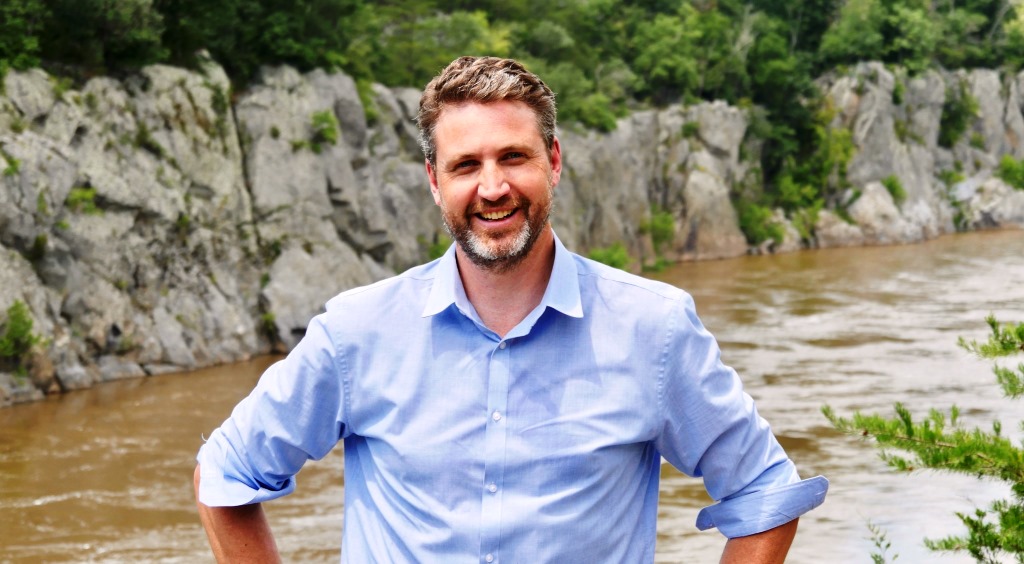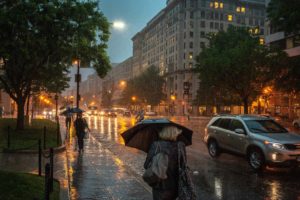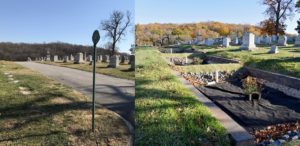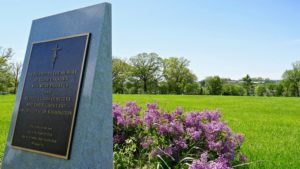This Guest Article for REVITALIZATION was written by Tim Purinton.
Like many of you, I’ve spent a career marshaling resources to advance restoration of nature and the revitalization of communities. Whether it’s cajoling public officials to allocate public funds or perfecting grant applications to sympathetic foundations, fundraising for restoration and revitalization is difficult.
The crux of the challenge is that the pool of resources for the “re-s” is relatively shallow compared to other social needs. If we, as ardent believers of the healing and economic power of revitalization, want to get more work done, we need to stimulate new sources of funding.
The District of Columbia Department of Energy and Environment (DOEE) has come up with a novel way of leveraging additional resources to address the issue of polluted stormwater runoff: a credit market propelled by private investment.
Stormwater runoff – which occurs when rainwater carries pollution and sediment off imperious surfaces like roadways into waterways – is the fastest growing source of freshwater pollution worldwide.
It’s also the only growing source of pollution in the nation’s largest estuary, the Chesapeake Bay, where booming population growth means more development and less green space to absorb rainwater.
It will take truly innovative solutions to fix this problem, and a credit market is one approach with a wealth of potential.
While credit trading systems have long been used for wetland mitigation, water allocation, habitat preservation, species protection, renewable energy and more, the creation and sale of stormwater credits is a new market-oriented approach firmly embedded in an urban context.
Here’s how it works: All new buildings in the city of Washington, DC are required to capture the stormwater runoff generated by their new impervious surface, but developers also have the option to purchase Stormwater Retention Credits (SRCs) from offsite certified green stormwater infrastructure projects to meet up to half of their requirements.
Each credit generated by these offsite projects is equal to one gallon of polluted water kept out of local waterways like the Potomac and Anacostia Rivers.
Making stormwater a tradable commodity in DC has had another positive outcome. The market has attracted private investors looking to receive a return on investment through credit sales over time, which has in turn diversified the funding streams available to get the work done. With more funding streams in place, more projects are making it into the ground.
The city is demonstrating their faith in the market as well. To ensure it gets established, the district has set aside funds to purchase credits to jumpstart the market and reduce initial investor risk. This provides new stormwater projects coming in with a guaranteed buyer.
One of the key benefits of this system is that much of the offsite green infrastructure generating credits has been strategically placed to yield the greatest environmental benefit and is often in parts of the city where little new development is taking place. Furthermore, these credit-generating green infrastructure projects have built-in operations and maintenance obligations to ensure they continue to function properly over time.
One might question why the unit of measure is quantitative and not qualitative (i.e. gallons vs. pollutants). A volumetric metric is used because flash flood conditions are the largest mobilizer of pollutants and excess sediment in the Potomac and Anacostia rivers.
Any chance to increase soil infiltration, keep stormwater on site and slow down its arrival to receiving waters means cleaner water and a healthier Chesapeake Bay.
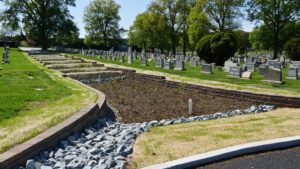
Second phase of the stormwater retention project at Mount Olivet Cemetery in Washington, DC. Photo by Matt Kane/TNC
What does this approach look like? The MD/DC Chapter of The Nature Conservancy (TNC) and NatureVest (the impact investment unit of TNC) created District Stormwater, LLC, to implement SRC projects.
In collaboration with the Catholic Archdiocese of Washington, District Stormwater has transformed the urban Mt. Olivet Cemetery into the final resting place of millions of gallons of stormwater pollution.
This was completed by removing barely used roads within the cemetery grounds and replacing them with water-capturing rain gardens stocked with native plants and underground layers of soil and gravel to provide additional filtration.
Funding for planning, engineering and construction came from a private investor–in this case, Prudential Financial. Based on the success of the first project, additional investments are being mobilized for new projects that will help to catalyze the market and inspire other impact investors. With the sale of credits over time, investors can expect a return on initial investment.
Doing so benefits the property owner as well. In Washington D.C. landowners are assessed stormwater fees by the local private water utility for the amount of impervious surface on their property. By removing pavement and replacing it with green infrastructure these fees can be reduced, as was the case for the local cemetery.
While cleaning stormwater helps to restore urban waterways, the new projects to capture it can also help revitalize urban spaces.
In planning for the design and placement of green infrastructure in Mt. Olivet Cemetery we learned from our partners at the Archdiocese that adjacent to the newly constructed rain gardens are acres of unmarked graves–burial sites for the poor and people who were enslaved before the civil war who made D.C. a bustling metropolis.
To memorialize this site, we are working with Nature Sacred, an organization that specializes in creating “urban sanctuaries,” to design a new green space that honors the sanctity of the site and provides places for reflection while also increasing tree and native plant cover.
It’s remarkable that trying to solve a problem like urban stormwater pollution can provide the opportunity to mobilize millions of dollars of impact investing and spur urban revitalization.
To their credit, leaders in D.C. government recognized the need to address this in unique ways and enabled conditions for new investments in our nation’s capital.
For other cities facing similar struggles with growing stormwater pollution, DC may help chart a new path forward.
Photo of Tim Purinton by Severn Smith/TNC.
About the Author
 Tim Purinton is Executive Director of the Maryland/DC chapter of The Nature Conservancy.
Tim Purinton is Executive Director of the Maryland/DC chapter of The Nature Conservancy.
Prior to working for the Conservancy, he was the founding director of the Massachusetts’ Department of Fish and Game’s Division of Ecological Restoration, a division he co-created in 2009.
Tim is a graduate of McGill University and in 2014 was awarded a Governor Bradford Fellowship for Excellence in Public Administration, which allowed him to attend and receive his MPA from Harvard University’s Kennedy School of Government.

